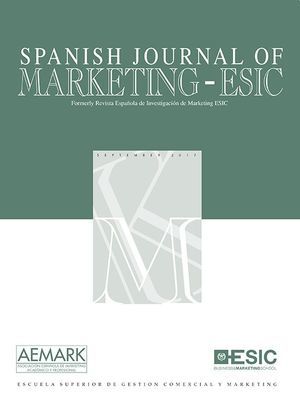Las empresas, de cara a incrementar su eficiencia y probabilidad de éxito, no se centran tan solo en gestionar contactos satisfactorios con sus clientes. Es necesario que den un paso más y que identifiquen aquellas tareas que proporcionen más valor a lo largo del ciclo completo de negocio. Un ejemplo son las relaciones de aprovisionamiento.
El presente trabajo analiza el papel que juega la orientación temporal en la relación empresa-proveedor, en el contexto PYME. Así, a través de un estudio de perfil cualitativo, se comprueba que en general estas relaciones tienden a orientarse a largo plazo, aunque los motivos difieren dependiendo del tamaño de las empresas y de la importancia del suministro. Aquellas empresas de mayor dimensión basan su decisión en el nivel de satisfacción percibido, mientras que las organizaciones de menor tamaño lo hacen en función de su “no-insatisfacción”. Además, conforme aumenta la importancia del suministro se incrementan los costes de cambio. La metodología seguida ha sido el estudio del caso, y las conclusiones obtenidas destacan el importante papel que en el contexto PYME tienen tanto el número de alternativas disponibles como los costes de cambio como impulsores de relaciones duraderas con proveedores.
To understand firms’ success we can now no longer focus solely on managing satisfactory relationships with customer. It is necessary to identify and manage appropriately all the activities capable of generating value throughout the complete business cycle. For example, there is growing interest in appropriate management of the relationships that companies establish with their suppliers, as the first step towards ensuring that the product complies with the desired standards.
This work is focused on the analysis of firm-suppliers relationships in the context of SMEs, specifically on their temporal orientation. This research is relevant because the SMEs context differs from that of larger firms and therefore specific researches are needed. Our research identifies that generally, these relationships present a long-term orientation, although motivations differ depending on the size of the firm and on the inputs relevance. Bigger firms analyse their satisfaction, while smaller firms consider their “not-dissatisfaction”. Also, the more relevant the input the higher the switching costs. Our data also highlight the role of the number of alternatives and the switching costs as drivers of the long-term orientation of the firm-suppliers relationships in the SMEs context. The implications derived from our study are discussed at the end of this paper.
Agradecimientos: Los autores agradecen el apoyo recibido del proyecto ECO2011-27023 (Ministerio de Ciencia e Innovación) y S09 (Grupo Generés) financiado por el Gobierno de Aragón y la Unión Europea.
Dpto. Dirección de Empresas. Universidad “Pablo de Olavide”. Ctra. Utrera, km. 1. 41.1013-SEVILLA. Teléfono: 954 97 79 24. Fax: 954 34 83 53.





